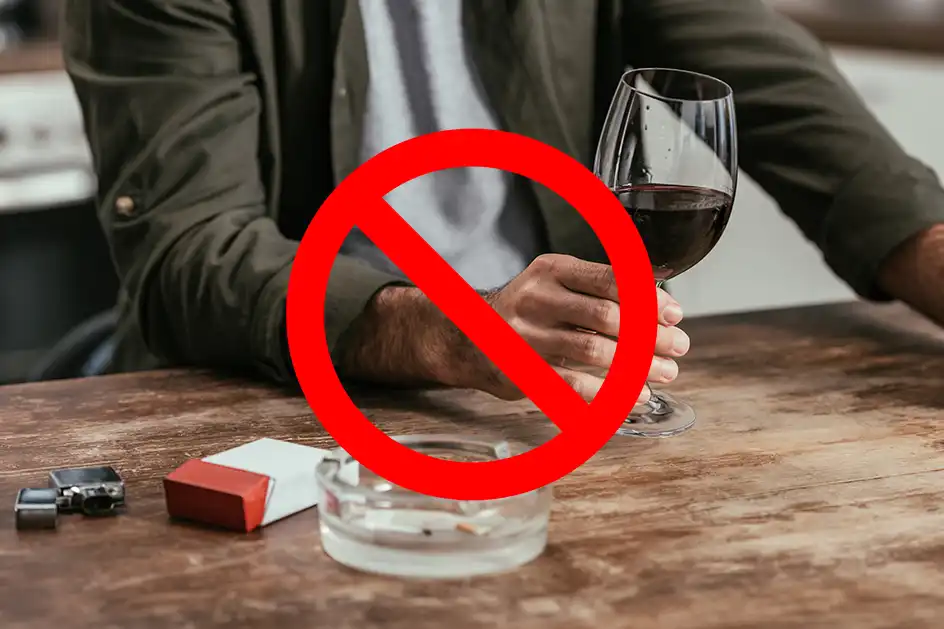High blood pressure, or hypertension, is a common condition affecting millions of people worldwide. It can lead to serious health problems such as heart disease, stroke, and kidney damage if left unmanaged. Fortunately, a balanced diet that is low in sodium and rich in fruits and vegetables, along with regular physical activity, can significantly help in reducing blood pressure levels. In this article, we’ll explore how these lifestyle changes can effectively lower blood pressure and improve overall health.
Understanding High Blood Pressure
High blood pressure, often called the “silent killer,” occurs when the force of blood against your artery walls is consistently too high. This can strain the heart, damage blood vessels, and increase the risk of severe health complications. Factors like poor diet, lack of exercise, stress, and genetics can contribute to hypertension. Fortunately, making certain lifestyle changes can help manage and even prevent high blood pressure.
The Role of a Balanced, Low-Sodium Diet in Managing High Blood Pressure
A balanced diet plays a critical role in lowering blood pressure. A diet low in sodium and rich in whole foods, especially fruits and vegetables, can reduce blood pressure and improve heart health. Here’s why:
1. Why Reduce Sodium?
Excess sodium in the diet can cause the body to retain water, leading to an increase in blood volume and, consequently, higher blood pressure. Reducing sodium intake can help relax blood vessels and decrease pressure.
Tips to Reduce Sodium:
- Avoid Processed Foods: Processed and packaged foods are often high in sodium. Choose fresh, whole foods instead.
- Cook at Home: Preparing meals at home gives you control over the amount of salt you use.
- Read Labels: Look for “low sodium” or “no added salt” labels when buying packaged foods.
- Use Herbs and Spices: Flavor your dishes with herbs, spices, lemon juice, and garlic instead of salt.
2. The Importance of Fruits and Vegetables
Fruits and vegetables are loaded with potassium, magnesium, fiber, and antioxidants, which all contribute to lowering blood pressure. Potassium, in particular, helps balance sodium levels in the body, promoting heart health.
Best Fruits and Vegetables for High Blood Pressure:
- Bananas: High in potassium, bananas help regulate blood pressure.
- Leafy Greens: Spinach, kale, and Swiss chard are packed with magnesium and potassium.
- Berries: Blueberries, strawberries, and raspberries are rich in antioxidants that support cardiovascular health.
- Citrus Fruits: Oranges, lemons, and grapefruits are high in vitamin C and fiber, which can reduce blood pressure.
- Beets: Rich in nitrates, beets help improve blood flow and lower pressure.
3. Whole Grains, Nuts, and Seeds
Whole grains, nuts, and seeds are excellent sources of fiber, healthy fats, and magnesium, all of which are beneficial for reducing high blood pressure. Whole grains, like brown rice, quinoa, and oats, help improve cholesterol levels and keep the heart healthy.
The Power of Cardiovascular Exercise in Lowering Blood Pressure
Regular physical activity, particularly cardiovascular exercise, is one of the most effective ways to lower high blood pressure. Exercise strengthens the heart, improves circulation, and helps maintain a healthy weight. Here’s how exercise contributes to better blood pressure management:
1. What is Cardiovascular Exercise?
Cardiovascular exercise, also known as aerobic exercise, involves activities that increase your heart rate and improve blood circulation. These exercises help the heart become more efficient at pumping blood, which can lower blood pressure over time.
Effective Cardiovascular Exercises:
- Brisk Walking: A 30-minute brisk walk most days of the week can significantly reduce blood pressure.
- Jogging or Running: If you prefer a more intense workout, jogging or running is an excellent way to boost heart health.
- Cycling: Riding a bike is a low-impact exercise that improves cardiovascular fitness and is easy on the joints.
- Swimming: Swimming is a full-body workout that increases stamina and strengthens the heart.
- Dancing: A fun way to get your heart rate up and reduce stress, which can also help lower blood pressure.

2. Strength Training for Heart Health
While cardiovascular exercise is crucial, strength training also plays a role in maintaining healthy blood pressure. Building muscle through weight lifting or bodyweight exercises can improve overall metabolism, support healthy weight management, and decrease blood pressure.
Lifestyle Tips to Manage High Blood Pressure
In addition to diet and exercise, certain lifestyle habits can further support healthy blood pressure levels:
1. Stress Management
Chronic stress can contribute to high blood pressure. Finding ways to relax and manage stress is crucial for heart health.
Effective Stress Management Techniques:
- Deep Breathing: Practice slow, deep breaths to calm the nervous system.
- Meditation: Regular meditation can reduce stress and promote overall well-being.
- Mindfulness: Focus on staying present and managing anxiety through mindfulness exercises.
- Yoga: Incorporating gentle yoga can improve flexibility, relax the mind, and support heart health.
2. Limit Alcohol and Quit Smoking
Both alcohol consumption and smoking can increase blood pressure. Reducing or eliminating these habits can have an immediate positive impact on your cardiovascular health.

3. Stay Hydrated
Proper hydration helps maintain blood volume and supports overall heart function. Drinking plenty of water throughout the day is essential for keeping blood pressure in check.
Sample Weekly Meal Plan for Lowering High Blood Pressure
Here’s a sample meal plan to guide you through a week of heart-healthy eating:
Day 1 – Monday
- Breakfast: Oatmeal topped with fresh berries, a handful of almonds, and a drizzle of honey.
- Lunch: Grilled chicken salad with mixed greens, cherry tomatoes, cucumber, and a balsamic vinaigrette.
- Snack: Sliced apple with a tablespoon of natural peanut butter.
- Dinner: Baked salmon with a side of roasted sweet potatoes and steamed green beans.
Day 2 – Tuesday
- Breakfast: Whole grain toast with avocado, a poached egg, and a sprinkle of chili flakes.
- Lunch: Quinoa and vegetable stir-fry with bell peppers, broccoli, and tofu, seasoned with herbs and spices.
- Snack: Greek yogurt with a handful of walnuts and a dash of cinnamon.
- Dinner: Turkey and spinach stuffed bell peppers with a side of brown rice.
Day 3 – Wednesday
- Breakfast: Smoothie with spinach, banana, a handful of blueberries, a tablespoon of chia seeds, and almond milk.
- Lunch: Lentil soup with diced tomatoes, carrots, celery, onions, and a touch of garlic, served with a side of whole grain bread.
- Snack: A handful of mixed berries (blueberries, raspberries, and strawberries) with a sprinkle of pumpkin seeds.
- Dinner: Grilled shrimp and quinoa bowl with steamed asparagus, cherry tomatoes, and a squeeze of fresh lemon.
Day 4 – Thursday
- Breakfast: Greek yogurt with sliced kiwi, a handful of walnuts, and a drizzle of raw honey.
- Lunch: Whole wheat wrap with grilled turkey breast, mixed greens, sliced avocado, shredded carrots, and a light yogurt dressing.
- Snack: A small orange with a few almonds.
- Dinner: Stir-fried tofu with bell peppers, snap peas, broccoli, and mushrooms, served over a base of brown rice and seasoned with ginger and turmeric.
Day 5 – Friday
- Breakfast: Whole grain pancakes topped with fresh strawberries, a few crushed pecans, and a side of plain, low-fat Greek yogurt.
- Lunch: Spinach and chickpea salad with diced cucumber, cherry tomatoes, red onion, feta cheese, and a lemon-olive oil vinaigrette.
- Snack: A sliced pear with a tablespoon of natural almond butter.
- Dinner: Baked chicken breast with a side of roasted Brussels sprouts, mashed sweet potatoes, and a sprinkle of fresh parsley.
Day 6 – Saturday
- Breakfast: Steel-cut oats with diced apple, a sprinkle of cinnamon, and a handful of raisins, served with a side of green tea.
- Lunch: Grilled vegetable and quinoa salad with roasted bell peppers, zucchini, eggplant, a handful of arugula, and a balsamic drizzle.
- Snack: Celery sticks with homemade hummus (made with chickpeas, tahini, garlic, lemon juice, and a hint of paprika).
- Dinner: Whole wheat pasta with a homemade marinara sauce, loaded with diced tomatoes, garlic, onions, spinach, and a side of steamed broccoli.
Day 7 – Sunday
- Breakfast: Poached eggs on a bed of sautéed spinach with a slice of whole grain toast and a side of fresh tomato slices.
- Lunch: Baked cod with a side of barley salad, featuring diced cucumber, cherry tomatoes, chopped fresh herbs (like dill and parsley), and a splash of lemon juice.
- Snack: Fresh mango slices with a handful of cashews.
- Dinner: Turkey and vegetable stew with carrots, potatoes, celery, green beans, and a touch of thyme, served with a side of steamed brown rice.
Lowering high blood pressure is achievable through consistent lifestyle changes, including a low-sodium diet rich in fruits, vegetables, whole grains, and regular cardiovascular exercise. These habits not only support better blood pressure management but also promote overall well-being and heart health. Making small, gradual adjustments can lead to lasting improvements, reducing the risk of serious health complications and helping you lead a healthier, more fulfilling life.
Remember, always consult with your healthcare provider before making significant changes to your diet or exercise routine, especially if you have a history of high blood pressure.




